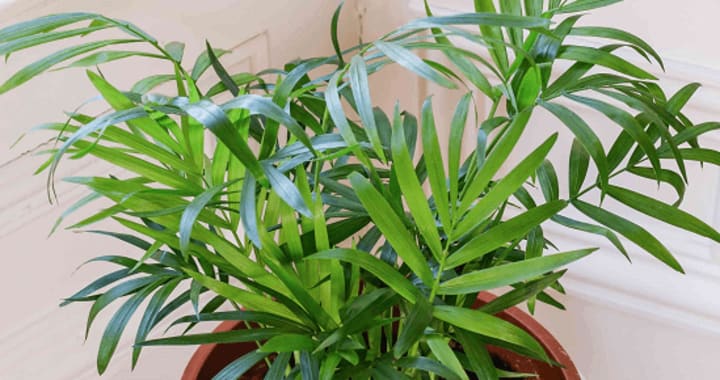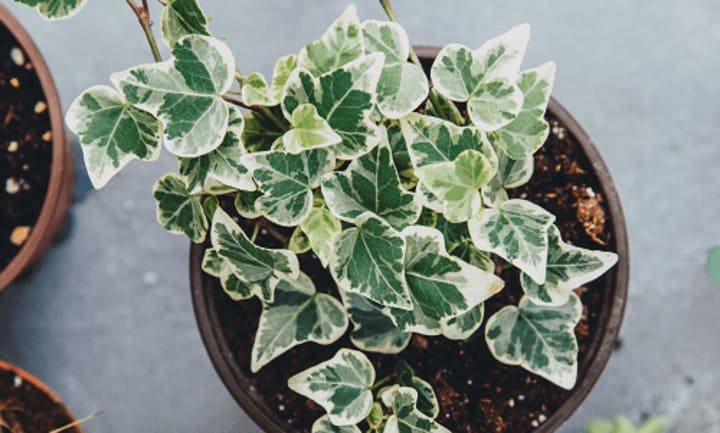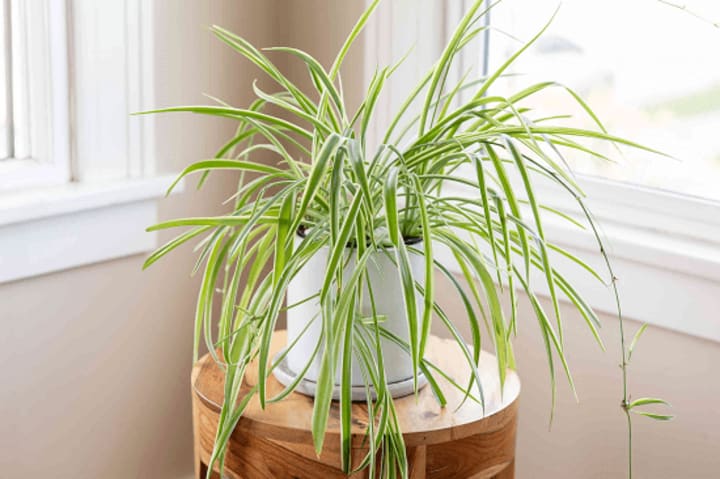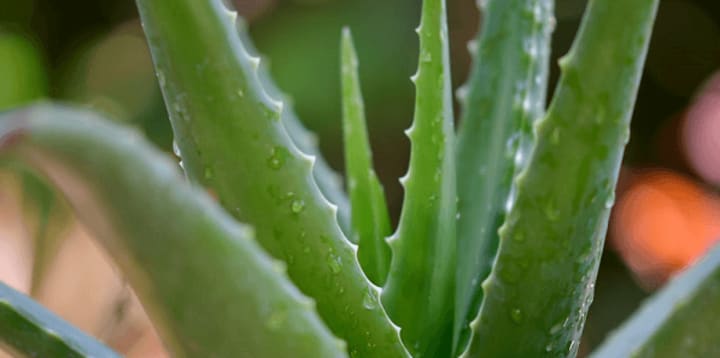Top 10 Indoor Plants
Indoor plants bring greenery to your home. The house looks good and feels fresh when there are indoor plants in the house. Indoor plants produce a positive vibe. Indoor plants can bring 'aliveness' to our artificial environments. An indoor plant delivers all of nature's mood-boosting and health advantages into your home. The indoor plants are also a visual point of focus in a room that makes you feel wonderful.

Indoor plants are kept in the patient's room because, according to a research, seeing some greenery while recovering helps hospital patients recuperate more quickly. There are several indoor plants, but the ten most well-known are listed below.
1. Peace Lily

The peace lily serves as an air cleaner by removing various airborne impurities. The leaves are simple to distinguish thanks to their shiny green tint. The white peace lily blossom has a teardrop form and is colored. Pets should not consume peace lilies since they are moderately poisonous to them if they do. This plant makes a great addition to bedrooms because it provides oxygen all night.
Information on the peace lily from science:
- Tracheophytes, Angiosperms, and Monocots are the clade that the peace lily belongs to.
- The Araceae family is the home of the peace lily.
- Alismatales is the order of the peace lily.
2. Parlour Palm

One of the most well-liked indoor plants is this one. The parlour palm is a wonderful interior plant that enhances the aesthetic of the space. Pets can safely be around the parlor palm. Slow-growing is the parlour palm plant. The parlour palm's leaves are green in hue. Parlour palms range in price from less expensive for smaller ones to more expensive for larger ones.
Scientific information about parlour palm:
- The parlour palm's scientific name is Chamaedorea elegans.
- The Tracheophytes, Angiosperms, Commelinids, and Monocots clade includes the parlour palm.
- The Araceae family is home to the parlour palm.
- Arecales is the order of the parlour palm.
- The parlour palm belongs to the Chamaedorea genus.
3. Flamingo Lily

This plant requires soil that drains properly. The heart-shaped leaves of flamingo lilies. Flamingo lily leaves have a smooth texture and are green in hue. The flamingo lily's flower is red in hue. Purchasing flamingo lilies is pricey. The flamingo lily is toxic to animals, and it can be harmful to the skin as well, therefore pets should not consume it.
Scientific information about flamingo lily :
- The scientific name of the flamingo lily is Anthurium andraeanum.
- The clade of the flamingo lily is Tracheophytes, Angiosperms, and Monocots.
- The genus of the flamingo lily is Anthurium.
4. English Ivy

It is a well-liked indoor hanging plant. Low maintenance was needed for this plant. A hanging pot can be used to hang this plant. The pears-shaped, dark green leaves of English ivy are. Pets should not consume English ivy since it is poisonous to them if they do. A fast-growing plant, English ivy.
Scientific information about English Ivy:
- The Tracheophytes, Angiosperms, Eudicots, and Asterids make up the clade of the English Ivy.
- Araliaceae is the family that includes English Ivy.
- Apiales is the order of English Ivy.
5. Boston Fern

A common indoor shade-tolerant plant is the Boston fern. The height of a Boston fern plant can range from 16 inches to 35 inches. The green leaves of the Boston fern have an appearance of feathers. Since it is non-toxic, pets can use it. This plant is fantastic for the bathroom because it can tolerate some shadow.
Scientific information about Boston fern:
- The Boston fern belongs to the clade Tracheophytes.
- A member of the Nephrolepidaceae family is the Boston fern.
- The Boston fern belongs to the Polypodiales order.
- The Boston fern belongs to the Nephrolepis genus.
6. Variegated Snake Plant

The leaf of the variegated snake plant is a dark green tint with white and yellow stripes. Low maintenance is required for this plant. Pets shouldn't consume the variegated snake plant since it is hazardous to them and potentially harmful to the skin. This plant makes a great addition to bedrooms because it provides oxygen all night.
Scientific information about variegated snake plant:
- The variegated snake plant is officially known as Dracaena trifasciata.
- Tracheophytes, Asparagales, Monocots, and Angiosperms make up the clade of variegated snake plants.
- Asparagales is the group that includes the variegated snake plant.
- The variegated snake plant belongs to the genus Dracaena.
7. Spider Plant

This plant has long, narrow leaves. The leaves have white stripes and a dark green tint. Small and white, the spider plant's blossom is tiny. Low maintenance was needed for this plant. The spider plant expands rapidly. Spider plants can grow up to 24 inches tall. Pets shouldn't consume the spider plant because it is dangerous to them in small doses if they do. Because spider plants thrive in humid situations, restrooms are the ideal place to store them. This plant is great for bedrooms because it also produces oxygen all night long.
Scientific information about spider plant:
- The scientific name of the spider plant is Chlorophytum comosum.
- The clade of spider plants is Tracheophytes, Asparagales, Monocots, and Angiosperms.
- The order of spider plants is the Asparagales.
8. Corn Plant

It looks like a miniature palm tree. The dark green leaves of the corn plant have a pale yellow border. The cost of the smaller corn plant is lower than the cost of the larger corn plant. This plant is strong and easy to grow, so it takes little maintenance. The beauty of the living room can be improved by keeping a maize plant there.
Scientific information about corn plants:
- The scientific name of the corn plant is Dracaena fragrans.
- The clade of corn plants is Tracheophytes, Monocots, and Angiosperms.
- The order of corn plants is the Asparagales.
- The genus of the corn plant is Dracaena.
9. Weeping Fig

It is a well-liked, classy indoor plant. Weeping fig leaves are oval in shape and have a dark green tint. The weeping fig plant can grow from three to six feet tall. This plant is great for bedrooms because it also produces oxygen all night long. Pets should not consume weeping figs since they are moderately poisonous to them if they do. The weeping plant requires routine misting and watering.
Scientific information about weeping fig:
- The clade of weeping fig is Tracheophytes, Eudicots, Rosids, and Angiosperms.
- The weeping fig belongs to the Moraceae family.
- The order of weeping fig is Rosales.
- The genus of the weeping fig is Ficus.
10. Aloe Vera

This plant, which is a well-known indoor plant, may be found in every home in India. There is a gel inside the plant's green leaves, which are colored green. This plant is also employed in first aid.
Scientific information about aloe vera:
- The clade of aloe vera is Tracheophytes, Monocots, and Angiosperms.
- Aloe vera belongs to the Asphodelaceae family.
- Order of aloe vera is Asparagales.
- The genus of the aloe vera is Aloe.
About the Creator
indika sampath
hello world
my name is indika sampath so I'm a article writer. you also can learn by reading somethings that important things.
thank you so much for visiting my profile
Enjoyed the story? Support the Creator.
Subscribe for free to receive all their stories in your feed. You could also pledge your support or give them a one-off tip, letting them know you appreciate their work.






Comments (1)
Never thought of using a corn plant in my house but it is an interesting idea.